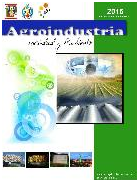Student participation Majokaraisa Organized group on promotion of Environmental Education in the Community Curarigua
Keywords:
Participation, organized student groups, environmental education.Abstract
This work is framed in a quantitative research, based on a design of field research, descriptive level, for the purpose of describing the participation of student organized group Majokaraisa Program Higher Agricultural Technology UCLA in promoting Environmental Education in the Curarigua community in the municipality Torres. The study subjects were represented by twenty (28) students belonging to Majokaraisa group who were administered a questionnaire type instrument structured for forty items with three possible answers: Never Always (S) Sometimes (AV) and (N). This instrument was validated through expert judgment and statistical reliability was used Cronbach alpha coefficient, yielding a value of 0.93. The results were analyzed according to the criteria of descriptive statistics, estimating absolute and percentage frequencies and the arithmetic average of answer choices, which reflected that most students Majokaraisa manifiestaron group owning 71.43% environmental sensitivity and 92 86% have high concern for developing environmentally focused projects that help preserve the
environment. Also, active in the promotion of environmental education to help
environmental conservation and integrate Curarigua community in solving social and
environmental problems in the environment where they make active life.
Downloads
References
Balmori, A. (2001). Educación ambiental y conservación de la naturaleza.
[Documento en línea]. Disponible: http://www.magrama.gob.es/es/ceneam/articu los-de-opinion/09047122800ceaf2_tcm7- 141776.pdf. [Consulta: 2013, Febrero 19].
Consejo Universitario de la Universidad Centroccidental “Lisandro Alvarado” UCLA, (2005). Reglamento para el registro y asignación de recursos de los grupos organizados de la UCLA. Barquisimeto. Autor
Corral, Y. (2009). Validez y confiabilidad de los instrumentos de investigación para la recolección de datos. [Documento en Disponible: línea]. http://servicio.bc.uc.edu.ve/educacion/revista/ n33/art12.pdf. [Consulta: 2013, Enero, 23].
Ministerio del Poder Popular para el Ambiente (2012). Energía Sostenible para todos. [Documento en línea]. Disponible:http://www.minamb.gob.ve/index.php?option=com_content&task=view&id= 4700&Itemid=99. [Consulta: 2012, Diciembre, 15].
Olmedo,T (2013). Comunidades que Aprenden: Una Experiencia de Capacitación en Metodología de Práctica Reflexiva. [Documento en Disponible: línea].
http://www.clave21.es/files/articulos/I13_Prac ticaReflexiva.pdf. [Consulta: 2013, Junio, 25].
Organización de las Naciones Unidas para la Educación, la Ciencia y la Cultura. UNESCO, (1977).Declaración de la Conferencia Intergubernamental de Tbilisi sobre
Educación Ambiental. [Documento en línea]. Disponible: unesdoc.unesco.org/images/0003/000327/032763sb.pdf.[Consulta: 2012, Diciembre, 18].
Ricardo, D. (2007). Procedimiento metodológico para el desarrollo de la sensibilidad estética ambiental. [Tesis Doctoral en línea].Disponible: http://www.revistaluz.rimed.cu/articulospdf/ed icion52/2mendama.pdf.. [Consulta: 2013, junio 21].
Rodríguez, C., Cortázar, M., y Haberkon, S. (2007). Integración y participación comunitaria. [Documento en línea] Disponible: http://www.psico.edu.uy/ academic/comunitaria/participacion.pdf. [Consulta: 2013, junio 14].
Ruiz, C. (2003). Instrumentos de investigación educativa. Procedimientos para su diseño y validación. Barquisimeto: CIDEG, C.A.
Socorro, N. (1993). Educación y ambiente. Dos requisitos para el desarrollo social. Escuela de Gerencia Social. Caracas. Venezuela.
Tamayo y Tamayo, C. (1998). El proceso de la investigación científica. México: LIMUSA.
Universidad Centro Occidental Lisandro Alvarado. UCLA (2013). Decálogo
ambiental del estudiante UCLAISTA. [Documento en línea].
Disponible: http://redisa.ucla.edu.ve/Comisi %C3%B3n%20de%20Ambiente/Dec%C3% A1logo%20Ambiental%20del%20Estudiante %20UCLAISTA.pdf. [Consulta: 2013, mayo, 23].
Published
How to Cite
Issue
Section

This work is licensed under a Creative Commons Attribution-NonCommercial-ShareAlike 4.0 International License.




